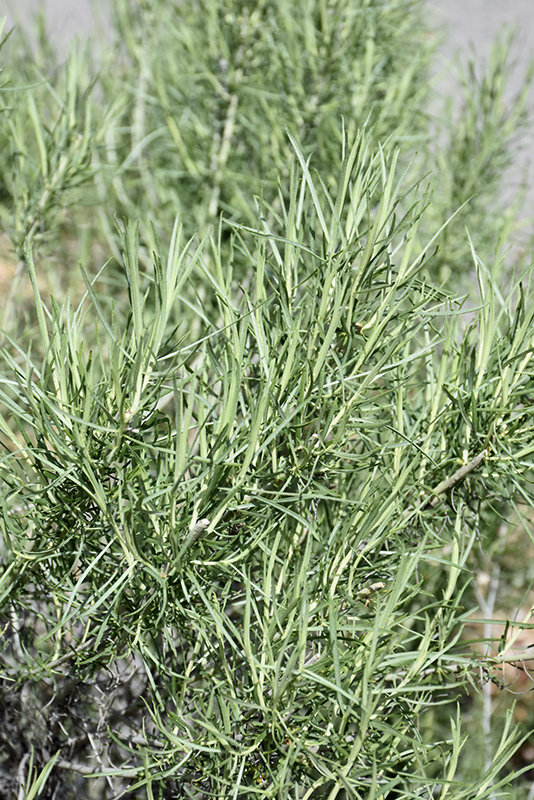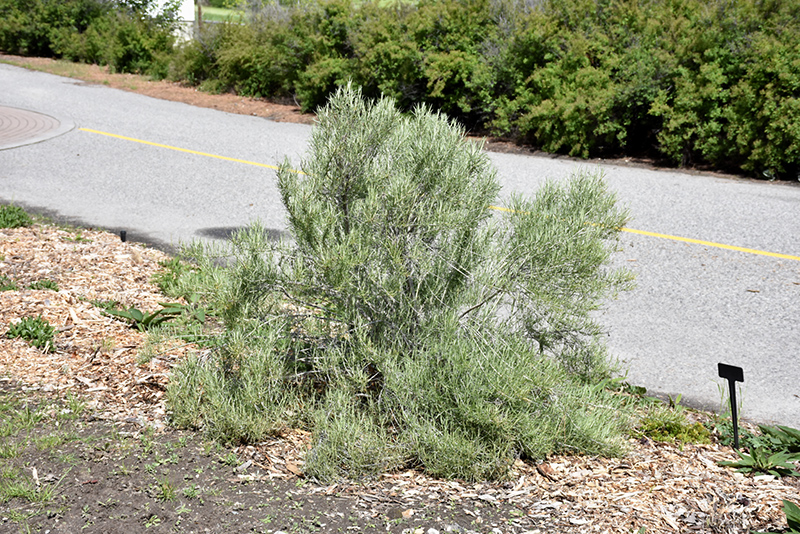Height: 7 feet
Spacing: 5 feet
Sunlight:
![]()
Hardiness Zone: 5a
Other Names: Rabbit Brush, syn. Ericameria nauseosa
Description:
This shrub produces pungent golden-yellow flowers from mid-summer to early fall; grassy narrow leaves grace an open and airy habit; cut back to several inches in spring to increase ornamental value; tough and drought tolerant
Ornamental Features
Rubber Rabbitbrush is blanketed in stunning clusters of fragrant yellow tubular flowers at the ends of the branches from late summer to early fall. It has grayish green foliage with hints of silver. The grassy leaves do not develop any appreciable fall color. The gray branches are extremely showy and add significant winter interest.
Landscape Attributes
Rubber Rabbitbrush is an open multi-stemmed deciduous shrub with a mounded form. Its relatively fine texture sets it apart from other landscape plants with less refined foliage.
This shrub will require occasional maintenance and upkeep, and is best cleaned up in early spring before it resumes active growth for the season. It is a good choice for attracting bees and butterflies to your yard. It has no significant negative characteristics.
Rubber Rabbitbrush is recommended for the following landscape applications;
- Mass Planting
- Hedges/Screening
- Rock/Alpine Gardens
- General Garden Use
- Naturalizing And Woodland Gardens
- Container Planting
Planting & Growing
Rubber Rabbitbrush will grow to be about 6 feet tall at maturity, with a spread of 6 feet. When grown in masses or used as a bedding plant, individual plants should be spaced approximately 5 feet apart. It has a low canopy, and is suitable for planting under power lines. It grows at a medium rate, and under ideal conditions can be expected to live for approximately 10 years.
This shrub should only be grown in full sunlight. It prefers dry to average moisture levels with very well-drained soil, and will often die in standing water. It is considered to be drought-tolerant, and thus makes an ideal choice for xeriscaping or the moisture-conserving landscape. It is particular about its soil conditions, with a strong preference for sandy, alkaline soils. It is somewhat tolerant of urban pollution. This species is native to parts of North America. It can be propagated by division.
Rubber Rabbitbrush makes a fine choice for the outdoor landscape, but it is also well-suited for use in outdoor pots and containers. Because of its height, it is often used as a 'thriller' in the 'spiller-thriller-filler' container combination; plant it near the center of the pot, surrounded by smaller plants and those that spill over the edges. It is even sizeable enough that it can be grown alone in a suitable container. Note that when grown in a container, it may not perform exactly as indicated on the tag - this is to be expected. Also note that when growing plants in outdoor containers and baskets, they may require more frequent waterings than they would in the yard or garden. Be aware that in our climate, most plants cannot be expected to survive the winter if left in containers outdoors, and this plant is no exception. Contact our experts for more information on how to protect it over the winter months.



